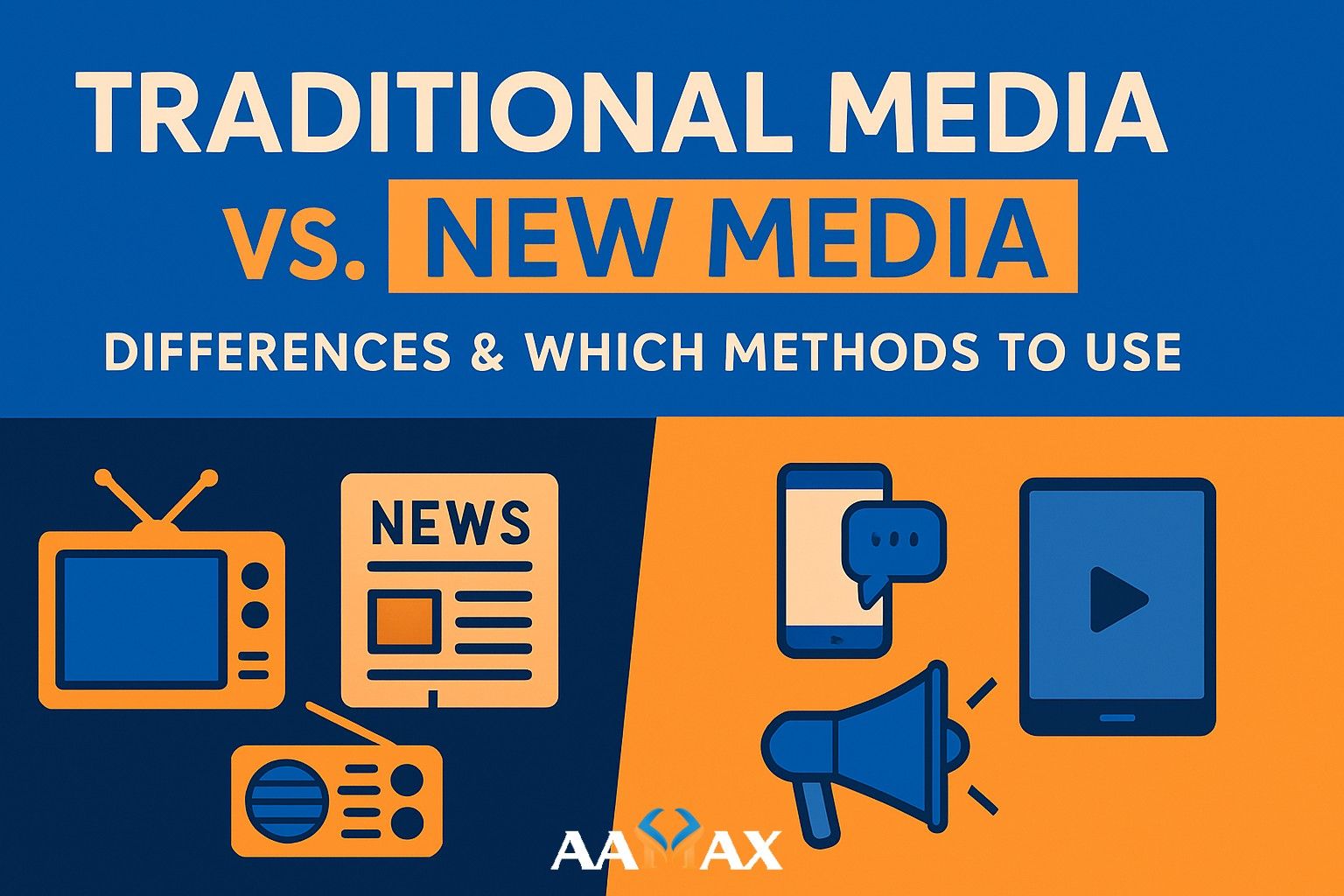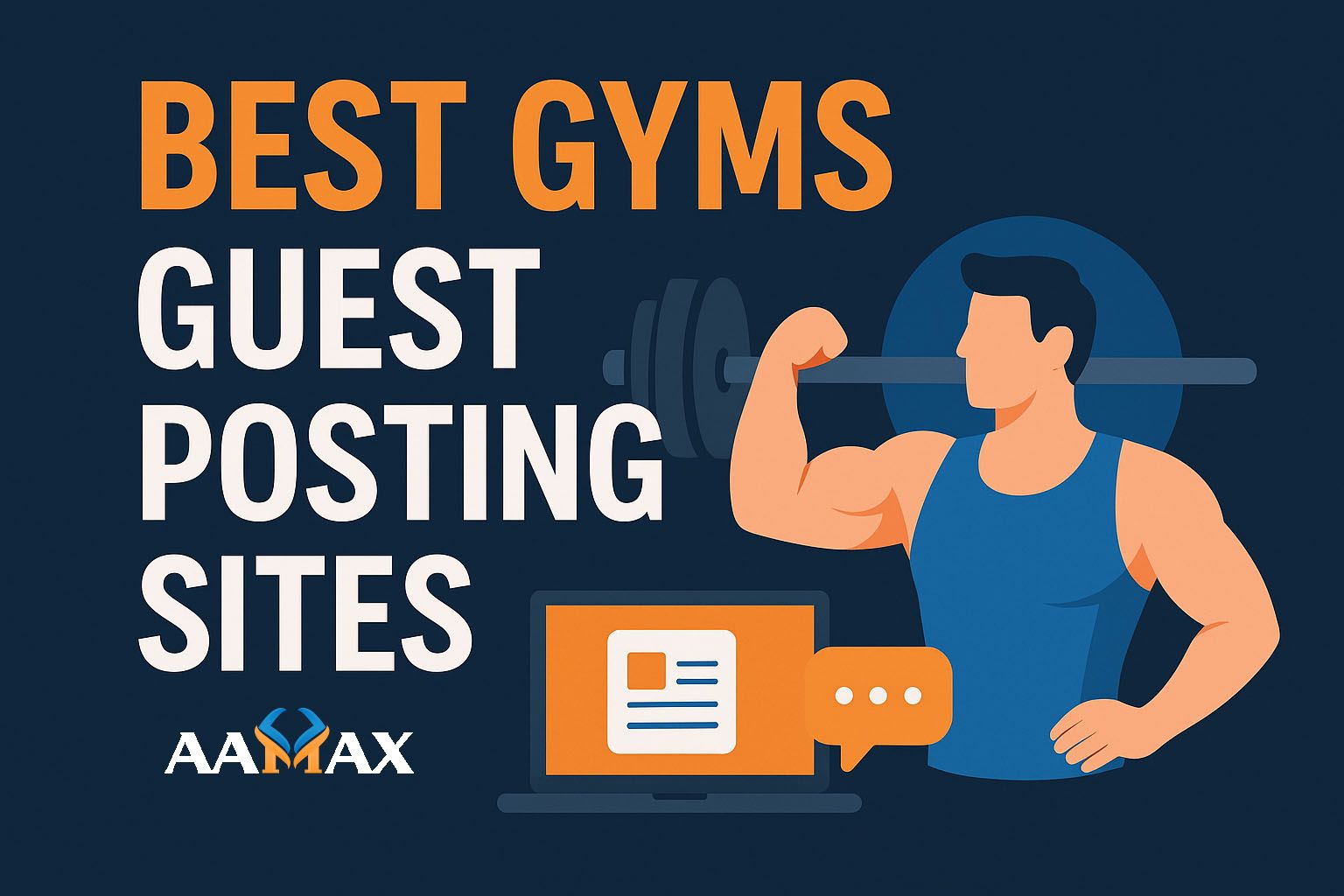
Traditional Media vs. New Media: Differences & Which Methods To Use
Marketing has evolved dramatically over the years. From print newspapers and billboards to social media and Search Engine Optimization (SEO) campaigns, the way businesses communicate with their audiences has shifted. One of the most debated topics in marketing today is the role of traditional media vs. new media.
Should businesses stick to traditional channels like TV and radio? Or should they go all in on digital strategies like social media and search ads? The truth is, both traditional and new media have strengths and weaknesses. Understanding their differences is essential to creating a marketing strategy that delivers results.
In this in-depth guide, we’ll compare traditional and new media, explore their pros and cons, and help you decide which methods best suit your business.
What Is Traditional Media?
Traditional media refers to the offline communication channels that have been used for decades to reach mass audiences. These include:
- Print media: Newspapers, magazines, brochures, flyers.
- Broadcast media: Television and radio.
- Outdoor advertising: Billboards, posters, transit ads.
- Direct mail: Physical letters, catalogs, postcards.
Traditional media is often called “one-way communication” because businesses push their message to a large audience with little opportunity for immediate feedback.
Advantages of Traditional Media
- Broad reach: Television and radio can reach millions of people simultaneously.
- High credibility: Print media and TV are often perceived as more trustworthy by older demographics.
- Impactful storytelling: A well-crafted TV commercial or billboard can leave a lasting impression.
- Local targeting: Local newspapers and radio stations help target specific regions effectively.
Disadvantages of Traditional Media
- High costs: TV ads, radio slots, and print campaigns can be expensive.
- Limited tracking: It’s difficult to measure how many people actually engage with a traditional ad.
- One-way communication: There’s no real-time interaction with audiences.
- Declining consumption: Younger generations consume less traditional media compared to digital alternatives.
What Is New Media?
New media refers to digital channels that leverage the internet and technology to engage audiences. These include:
- Social media platforms: Facebook, Instagram, LinkedIn, TikTok, X (Twitter).
- Websites and blogs.
- Search engines and SEO.
- Email marketing.
- Video platforms: YouTube, live streaming, webinars.
- Digital ads: Google Ads, display ads, social media ads.
New media is interactive and enables two-way communication. Brands can not only broadcast messages but also engage with customers in real time.
Advantages of New Media
- Cost-effective: Running social media campaigns or Google Ads can be cheaper than TV spots.
- Measurable: Analytics tools allow marketers to track impressions, clicks, conversions, and ROI.
- Interactive: Customers can comment, share, or message directly, creating deeper engagement.
- Targeted advertising: Digital platforms allow hyper-targeting based on demographics, behavior, and interests.
- Scalable: Campaigns can be scaled up or down instantly depending on performance.
Disadvantages of New Media
- Information overload: Audiences are bombarded with online ads, making it harder to stand out.
- Credibility issues: Fake news and spam ads have reduced trust in some online channels.
- Constantly evolving: Algorithms and platforms change frequently, requiring ongoing adaptation.
- Privacy concerns: Consumers are increasingly sensitive about data tracking and targeted ads.
Key Differences Between Traditional Media and New Media
1. Communication Style
- Traditional Media: One-way communication, where businesses broadcast a message.
- New Media: Two-way communication, encouraging feedback, shares, and conversations.
2. Reach vs. Targeting
- Traditional Media: Excellent for reaching broad audiences, such as during prime-time TV.
- New Media: Better for reaching niche audiences with highly targeted messages.
3. Cost Structure
- Traditional Media: High production and placement costs, often out of reach for small businesses.
- New Media: Lower entry costs, allowing even small businesses to advertise.
4. Measurement
- Traditional Media: Limited tracking capabilities. Advertisers rely on surveys or circulation numbers.
- New Media: Detailed analytics on impressions, clicks, engagement, and conversions.
5. Longevity
- Traditional Media: Campaigns like print ads or billboards can last for weeks or months.
- New Media: Campaigns can be adjusted or removed instantly, making them more dynamic.
6. Demographics
- Traditional Media: Often appeals more to older demographics.
- New Media: Stronger with younger, tech-savvy audiences.
Which Method Should You Use?
The answer depends on your business goals, target audience, and budget. Let’s explore different scenarios.
When to Use Traditional Media
- Brand awareness at scale: If you want to reach millions quickly (e.g., product launches).
- Local marketing: Small businesses targeting local customers can benefit from newspapers or radio.
- Older demographics: If your audience is above 50, traditional media may be more effective.
- High credibility needs: Some industries like law firms or healthcare may benefit from the authority traditional media carries.
When to Use New Media
- Tight budgets: Startups and small businesses can afford social media and digital ads more easily.
- Precise targeting: If you need to reach a specific niche, digital is the way to go.
- Engagement focus: Brands that thrive on interaction and community building benefit from social media.
- Fast-paced campaigns: Promotions, flash sales, or events can be advertised instantly online.
A Hybrid Approach
The most effective strategy for many businesses is a hybrid approach—using both traditional and new media.
For example:
- A retail brand might run a TV ad for national visibility while using social media ads to retarget interested customers.
- A local restaurant may place flyers in the neighborhood but also use Instagram to engage younger diners.
- A law firm may rely on radio ads for awareness and LinkedIn campaigns for lead generation.
Combining both ensures you cover a broader spectrum of your target audience.
The Evolution of Consumer Behavior
Understanding consumer behavior is key to deciding between traditional and new media. Today’s consumer is:
- Always connected: With smartphones, people access digital content 24/7.
- Research-driven: Buyers often research online before making offline purchases.
- Multi-platform: A consumer might see a TV ad but then search for reviews online.
- Community-focused: Social media has shifted power to word-of-mouth and peer recommendations.
This means businesses cannot afford to rely solely on traditional media. Digital integration is no longer optional—it’s essential.
Measuring ROI: Traditional vs. New Media
Return on Investment (ROI) is one of the biggest deciding factors.
- Traditional Media ROI: Harder to measure. You might estimate reach but cannot track conversions precisely.
- New Media ROI: Easier to measure. Analytics show clicks, leads, and sales, making optimization possible.
For businesses that need clear performance metrics, new media is more efficient. However, for brand image and prestige, traditional media still holds weight.
Challenges of Transitioning from Traditional to New Media
Businesses that have relied on traditional media for decades may face challenges adapting to digital:
- Skill gaps: Teams may lack expertise in SEO, social ads, or analytics.
- Technology investment: New tools and platforms require investment.
- Cultural shift: Moving from “broadcast” to “engagement” requires mindset changes.
- Consistency: Managing multiple digital platforms can be time-consuming.
Despite these challenges, embracing digital is necessary for long-term growth.
Future of Media: Where Things Are Heading
The future is clearly leaning toward digital-first strategies, but traditional media won’t disappear entirely. Instead, we’ll see:
- Integrated campaigns: Ads appearing both on TV and online platforms simultaneously.
- More interactive ads: New media will continue to evolve with AR, VR, and AI personalization.
- Data-driven decisions: Marketing will increasingly rely on analytics to allocate budgets effectively.
- Blurring boundaries: Traditional outlets like newspapers and TV are already moving online with digital editions and streaming.
The best marketers will be those who can adapt and balance both worlds.
Final Thoughts
The debate of traditional media vs. new media isn’t about choosing one over the other—it’s about using each strategically. Traditional media still delivers credibility and mass reach, while new media provides precision, interactivity, and measurable ROI.
For most businesses, the smartest move is to integrate both approaches, depending on goals and target audiences. A balanced strategy ensures you don’t miss opportunities with either demographic group.
If you want expert guidance in crafting the perfect marketing mix, consider working with AAMAX. AAMAX is a full-service digital marketing company offering Web Development, Digital Marketing, and SEO Services, helping businesses succeed in both traditional and digital landscapes.







